
University of Putra Malaysia, abbreviated as UPM, is a Malaysian public research university located in Serdang, Selangor. Formerly it was named Universiti Pertanian Malaysia, focusing on agricultural sciences and related fields. Since the 1990s, the fields of study have expanded to include human ecology, languages, architecture, medicine, computer science and biotechnology. Currently there are 15 faculties, 11 institutes and 2 schools covering these as well as agriculture, forestry, veterinary medicine, economics, engineering, sciences, and education.

Kota Samarahan, formerly known as Muara Tuang, is a town and the administrative seat of the Samarahan District in Samarahan Division, Sarawak, Malaysia. It is also a satellite town for Kuching due to its proximity to the city part of Greater Kuching area. The Sarawak government position Kota Samarahan as the medical and education hub of the state. Saramahan is the heart of Sarawak Malays which is majority of 56%.
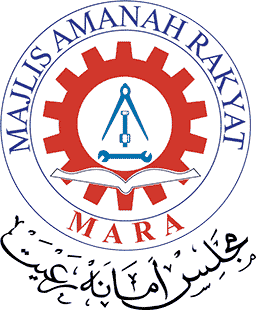
Majlis Amanah Rakyat is a Malaysian government agency. It was formed to aid, train, and guide Bumiputra in the areas of business and industry. MARA was formed on March 1, 1966, under the Rural and National Development Ministry.

Alor Gajah District is one of the three administrative districts in Malacca, Malaysia. It borders Tampin District, Rembau District and Port Dickson District in Negeri Sembilan to the north and borders Jasin District and Melaka Tengah District in the east and south respectively.

Police Undergraduate Voluntary Corps is an undergraduate police volunteer organisation in Malaysia. They are undergoing periodic training times to times in 3 years in their respective university and will be commissioned as Police Volunteer Reserve Corp (Malaysia) Inspector by the Inspector General of Police in the end of the 3 years training.
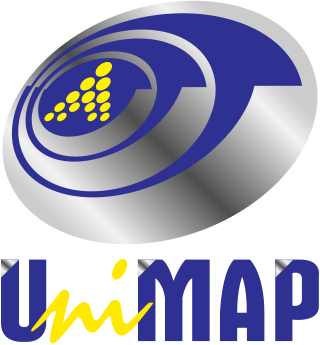
Universiti Malaysia Perlis is a Malaysian public institution of higher learning located in Perlis. It was previously known as Kolej Universiti Kejuruteraan Utara Malaysia. It was established as the 17th Public Institution of Higher Learning in Malaysia on 25 July 2001. The first Vice-Chancellor is YBhg. Datuk Prof. Emeritus Dr. Kamarudin Hussin and the current Vice-Chancellor is YBhg. Lt Kol Prof. Ts. Dr. Zaliman Sauli. On 7 February 2007, KUKUM was upgraded to a full-fledged university and got its present name. Its logo, used since 2003, was rehashed as the logo of the University.
UiTM United Football Club is a Malaysian professional football club based in Shah Alam, Selangor, Malaysia. The club played in the Malaysia M4 League. Founded in 2008, their home ground is 10,000-seater UiTM Stadium. The club widely known as The Lion Troops.
Stadium UiTM is a stadium located at Shah Alam, Selangor, Malaysia. Its capacity is 10,000. The stadium was built for Universiti Teknologi MARA and the UiTM Football Club. SPA FC and Selangor F.C. also had used the stadium as their interim home ground. It can also be used as a rugby pitch. Activities organized by the university are sometimes held in the stadium.
Irmohizam bin Ibrahim is a Malaysian politician and corporate figure who is a member of the United Malays National Organisation (UMNO), a component party of the Barisan Nasional (BN) coalition. Born in Kampung Kuantan, Kuala Selangor, he was the former Member of Parliament for Kuala Selangor from 2013 to 2018. He is currently the group executive director of the World Trade Centre Kuala Lumpur (WTCKL) in Kuala Lumpur.
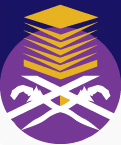
Universiti Teknologi MARA (UiTM) Cawangan Perlis is one of the branch campus of Universiti Teknologi MARA located in Arau, Perlis, Malaysia. It was established in 1974 at Kangar, making it as the third oldest UiTM campus in the whole country. In 1980, the campus moved to their permanent location in Arau. Now, UiTM Perlis is the largest branch campus around the country, by the number of student and also the total courses offered.
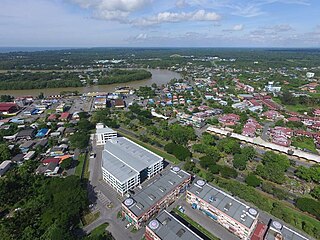
Mukah (muːkəh), historically known as Muka is a coastal town which serves as the capital and the administrative center of the Mukah Division since 1 March 2002.
Amirizdwan Taj Bin Tajuddin, commonly known as Taj, is a Malaysian professional footballer who plays as a centre back and capped by Malaysian national team.
Valerie Ross is a Malaysian composer and music researcher. Her compositions has won her numerous international awards and recognition and is considered a music giant in Malaysian contemporary music.
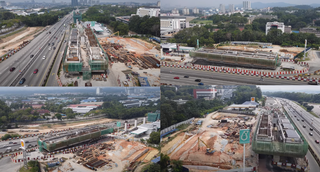
The UiTM Shah Alam LRT station is a light rapid transit (LRT) station that serves the Universiti Teknologi MARA (UiTM) campus and Seksyen 16 areas in Shah Alam, Selangor, Malaysia. It serves as one of the stations on the Shah Alam line. The station is an elevated rapid transit station forming part of the Klang Valley Integrated Transit System. The station is located between Petronas and Shell petrol stations near Federal Highway.
MISI University, formerly known as Malaysia Institute for Supply Chain Innovation (MISI), is a supply chain focused university located in Shah Alam, Selangor, Malaysia. The university was launched as a joint initiative between the Massachusetts Institute of Technology (MIT) and the Government of Malaysia on March 22, 2011.
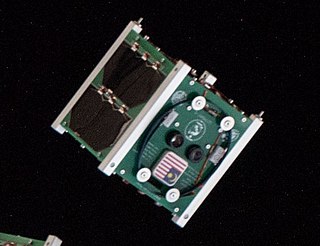
UiTMSAT-1 was a Malaysian nanosatellite, built primarily by Universiti Teknologi MARA (UiTM) as part of the multi-nation Birds-2 project. The 1U CubeSat was launched into space on 29 June 2018 and deployed from the International Space Station (ISS) on 10 August 2018.

Professor Dato' Dr. Rahmat bin Mohamad is a Malaysian legal scholar and professor of law at the Universiti Teknologi MARA. He is currently the Chairman of the Asian International Arbitration Centre (AIAC). He was the Chairman of National Sports Institute of Malaysia from August 2019 until August 2023 and the Chairman of the Human Rights Commission of Malaysia (SUHAKAM) from August 2022 until August 2023.
Abdul Rahman bin Arshad was a Malaysian academician, educator and diplomat. He served as the Pro-Chancellor of the Universiti Teknologi MARA (UiTM) and has been widely known as the national education icon.
Tun Arshad bin Ayub was a Malaysian academician and educator. He was a founding father of the Universiti Teknologi MARA (UiTM), Malaysia's largest higher learning institution, where he was its director from 1967 to 1975, later served as its Pro-Chancellor from 2000 until his death in 2022. He was widely known as the national education icon.














